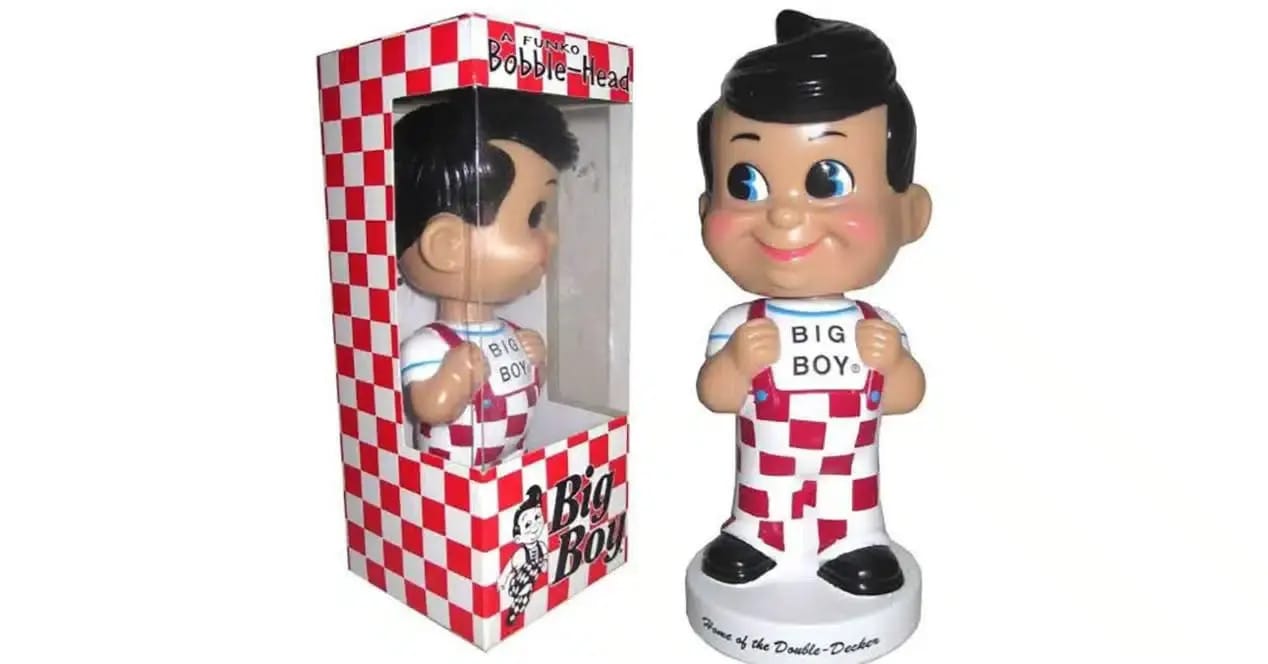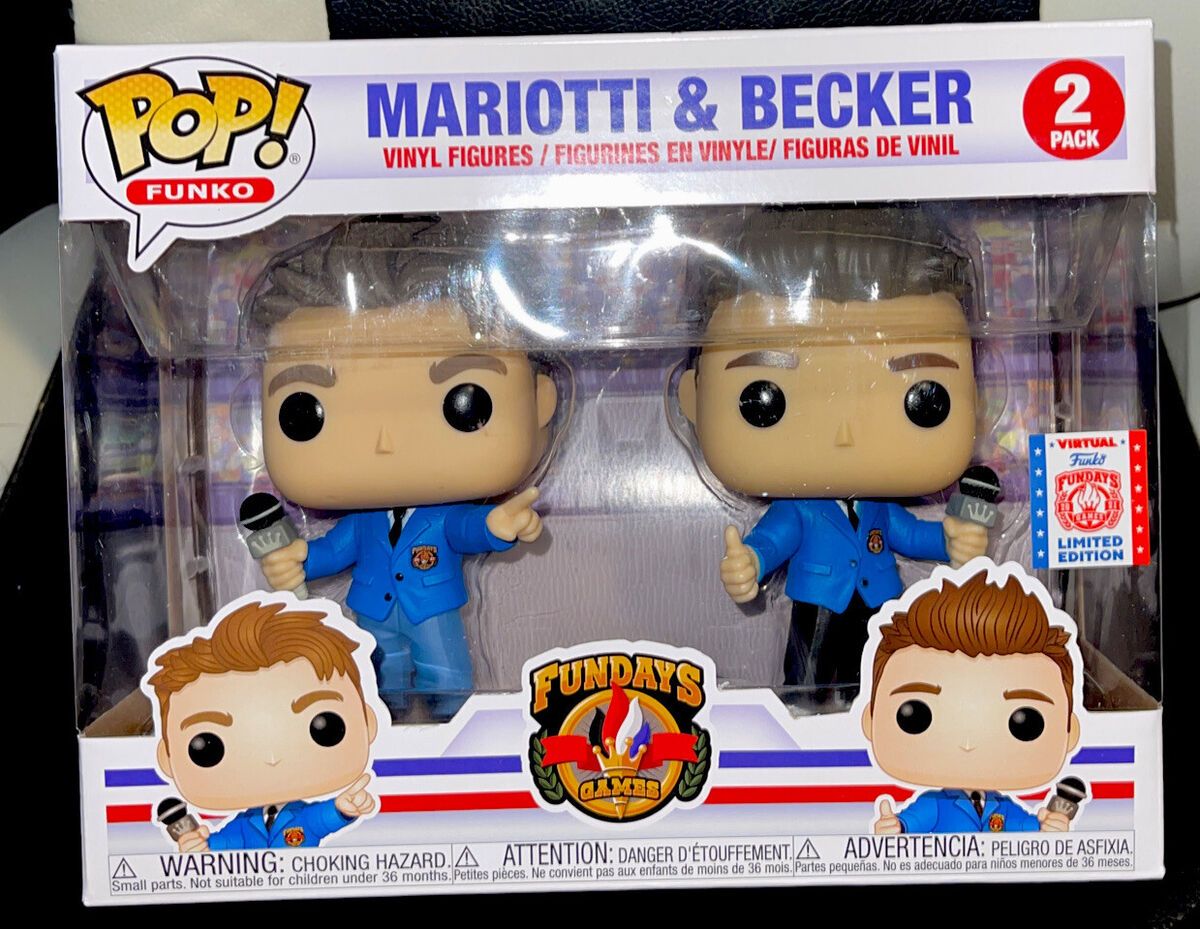- Mozuma: Beyond Screens
- Posts
- The Rise: How a Big Boy Bobblehead Built a Billion-Dollar Empire
The Rise: How a Big Boy Bobblehead Built a Billion-Dollar Empire
Part 1 of 3 in the Funko Chronicles
BIG HEADS — BIG BUSINESS

Funko isn't just a toy company. It's a pop culture production line. From licensing to landfill, this company has ridden the wave of fandom – and sometimes nearly drowned in it.
This is not a story about cute figurines. It's a deep dive into how Funko scaled to $1 billion in revenue by building an empire of fast-manufactured, license-powered, dopamine-triggering desk buddies.
Picture this: It's 1998, and a nostalgic toy collector named Mike Becker can't find a coin bank of Bob's Big Boy - you know, that chubby-cheeked diner mascot. Instead of giving up, he does something wild: he cold-calls the restaurant chain and convinces them to let him make his own.
That single bobblehead became Funko's first product. Today, Funko moves over $1 billion worth of those big-headed vinyl figures annually.
From Burgers to Billion-Dollar Business

Becker's Big Boy success opened his eyes to a massive opportunity. Why stop at hamburger mascots? He launched "Wacky Wobblers"—a line of oddball bobbleheads featuring forgotten pop culture icons like Betty Boop and Tony the Tiger.
His breakthrough came with Austin Powers. Yes, the groovy spy comedy. Becker shipped 100,000 Austin Powers bobbleheads in 1999, proving that nostalgia-driven collectibles had serious commercial potential.
By 2005, Becker had built a thriving niche business but was burning out from the workload. Enter Brian Mariotti, who bought Funko with grand ambitions to expand beyond bobbleheads.

But they didn’t go viral immediately. Funko’s big break came at San Diego Comic-Con 2010, where it debuted the first Pop! Vinyls exclusively to attendees. Fans swarmed the booth. The limited release sold out, and the format gained instant traction online. That moment sparked the phenomenon.
And they were perfect for licensing.
The Game-Changer: Pop! Vinyl
In 2010, Funko unveiled its masterpiece: the Pop! Vinyl figure. These 4-inch collectibles with oversized square heads, dot eyes, and tiny bodies were pure genius.
Why? Three reasons:
Instant Recognition: The uniform design made every character immediately identifiable as a Funko product.
Infinite Adaptability: Any character could fit the Pop! template—from Mickey Mouse to Darth Vader to your favorite anime protagonist.
Mass Appeal: The cute, simplified aesthetic attracted both hardcore collectors and casual fans.
Sales exploded overnight. Funko had created the perfect canvas for pop culture obsession.
Licensing Everything (and Everyone)

Here's where Funko got really smart. Instead of creating original characters, they licensed everyone else's. Disney, Marvel, Star Wars, Harry Potter, K-pop stars, indie video game characters—if it has fans, Funko probably has the rights to make a figure of it.
Today, Funko holds over 1,100 licensing agreements covering 600+ properties. This strategy instantly taps into existing fanbases without the risk of creating new IP.
The Numbers Game:
Typical royalty payment: ~15% of sales
Funko's gross margin: 38-40% (lower than some toymakers due to royalties)
Properties in catalog: 600+
Content providers: 200+
This diversity protects Funko from any single franchise's ups and downs. When Game of Thrones ended, they still had Marvel, anime, and countless other properties driving sales.
In 2021, Funko reported $1.03 billion in net sales, with over $700 million coming from Pop! Vinyl products alone. Their top-selling categories were:
Movies: 31%
Animation: 18%
TV: 14%
Games: 10%
It’s a B2B dream model: content holders get free promotion and royalties. Funko gets emotional buy-in from fans.
Why Studios Love Funko: The Transmedia Marketing Machine

Entertainment companies quickly realized Funko figures are basically 3D billboards for their content. A Pop! on someone's desk is free advertising that lasts for years—but it's more sophisticated than simple product placement.
This is transmedia storytelling in vinyl form. Each Funko Pop extends the fictional universe beyond the screen. That Walter White figure on your shelf? It keeps Breaking Bad alive in your daily life years after the finale. The Mandalorian with Baby Yoda? It's Disney+ marketing that works 24/7 without any media spend.
The Transmedia Advantage:
Persistent Brand Presence: Unlike ads that disappear, Pops maintain visibility indefinitely
Emotional Connection: Fans develop attachment to physical representations of beloved characters
Social Signaling: Collections become conversation starters, spreading word-of-mouth organically
Cross-Platform Synergy: Physical collectibles drive digital engagement and vice versa
Now studios often approach Funko proactively. New Marvel movie coming out? They're already brainstorming exclusive figure variants before the trailer drops. It's become so integrated into marketing strategies that some studios plan Funko releases as carefully as they plan poster campaigns.
Netflix even uses Funko data to gauge show popularity. High Pop! sales often correlate with viewer engagement—making these toys inadvertent market research tools.
The Speed Machine
Funko designs figures in Everett, Washington. But everything else — manufacturing, painting, packaging - happens overseas. No Factories, No Problem
Funko owns zero factories.
Most Pops are made in Vietnam and China by ODM partners.
Perhaps Funko's most impressive feat is speed. They can go from concept to store shelves in just 70 days:
Week 1-2: Character design and 3D modeling at Everett, Washington HQ Week 3-4: Digital files sent to manufacturing partners in Vietnam Week 5-8: Production, painting, and packaging Week 9-10: Shipping and distribution
This rapid cycle lets Funko capitalize on viral moments and trending characters while they're still hot—something traditional toy companies take a year or more to accomplish.
The Foundation of an Empire

By mastering three elements- iconic design, aggressive licensing, and lightning-fast production - Funko transformed from a quirky bobblehead maker into a pop culture juggernaut.
But success brought new challenges. In Part 2, we'll explore how Funko weaponized scarcity and built a cult-like fanbase that would line up overnight for exclusive figures.
Then came the crash...
Next week in Part 2: "The Hype Machine: How Funko Turned Collecting into Addiction"
What Funko property would you most want to see as a Pop! figure? Reply and let us know!